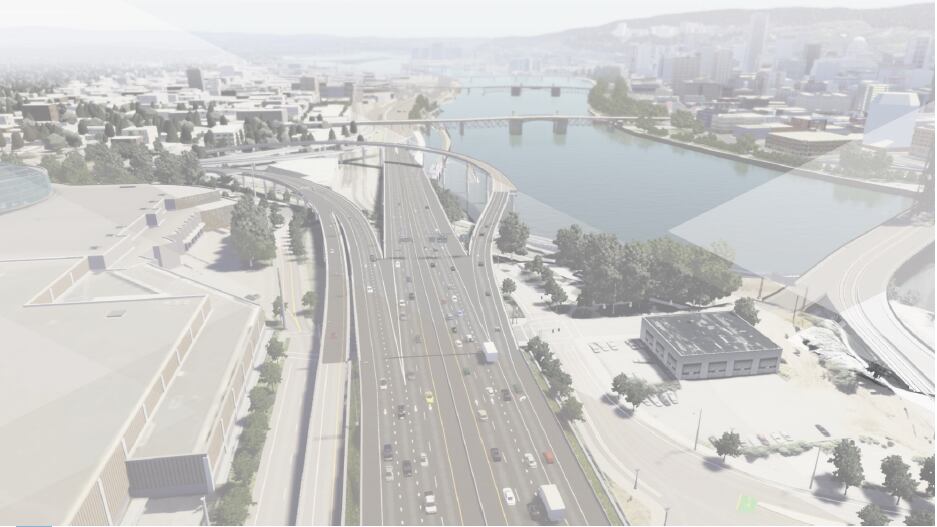The expansion of Interstate 5 at the Rose Quarter may cost as much as $795 million, not the $450 million estimated in 2017, when the Oregon Legislature passed a bill to fund the project.
That new information comes from a draft copy of a report due to the legislature in February.
The draft of an Oregon Department of Transportation Cost to Complete report, obtained by WW, pegs the project cost at somewhere between $715 million and $795 million, using 2025 as when the project will be midway through completion.
It attributes a substantial portion (upwards of $130 million) of that cost increase to inflation, though it's not clear why the agency wouldn't have counted that in the original cost given that the project was never expected to begin immediately.
Costs for construction, engineering and the purchasing of property for right of way all are higher than previously estimated. ODOT also blames the new gross receipts tax, passed by the legislature this year to fund schools, for driving the cost higher by at least $25.5 million.
House Bill 2017, the transportation package passed by the legislature in 2017, approved $30 million a year in funding for the project beginning in 2022.
Oregon Department of Transportation officials say the draft is incomplete, but declined to say if the project costs would be higher or lower when the draft is finished. ODOT will make the report public next month and share it with the Legislature in February.
"The agency has been very transparent about cost estimates at various stages of the project," says ODOT spokesman Don Hamilton. "This is an open process that is refined over time. As the scope and schedule change and as we learn more about construction costs, the overall cost of every project changes. ODOT uses a similar approach to every project. The nearer to construction the better idea of costs is known."
The project has already been a lightning rod. Environmentalists have challenged the idea of building a wider highway, given climate change. Portland Public Schools has been skeptical of expanding the highway closer to Harriet Tubman Middle School.
Several local leaders have asked for a more thorough environmental review.
The draft Cost to Complete report does not estimate the cost of an expanded retaining wall at Harriet Tubman Middle School; of redesigning one of the highway covers for "pedestrian and bicycle needs;" or of altering the traffic flow near Moda Center, among other costs for which there is a blank spot for estimates in the draft report.
This week, as the members of the Oregon Transportation Commission prepared to push forward on the project in meetings on Dec. 16 and 17, they referenced the Cost to Complete Report but not the increased costs, and appeared ready to greenlight the project despite the objections of Portland Public Schools, Albina Vision and local elected officials. (The OTC delayed action only after Gov. Kate Brown delivered a last minute letter on Dec. 16, asking for a pause.)
Related: Gov. Kate Brown Asks Transportation Commission to Delay Decision on Rose Quarter Project
The report does not assume ODOT would acquire Harriet Tubman Middle School from PPS, a transaction the district says could cost $100 million.
And it does not plan for the more substantial caps for I-5 sought by Albina Vision, the nonprofit group advocating for a rebuilding of the African-American neighborhood decimated in part by I-5's construction decades ago.
"The Cost to Complete report suggests that ODOT continues to deceive the public in every pertinent detail about this disastrous, polluting megaproject," says Aaron Brown, organizer of No More Freeways, a group opposed to the project.
“The project’s cost have increased 66 percent in approximately three years, and this increase doesn’t addressing the expensive but necessary recommended changes Portland Public Schools and Albina Vision have requested to ensure ODOT’s proposals contributes to initiatives for a healthy, functional neighborhood, city and region.”
The ODOT draft also lays out the cost of preparing the more thorough environmental review.
“If the Project is required to undertake an Environmental Impact Statement (EIS), the Project would be delayed by approximately three years. A three year delay would incur an additional $66 million (3.0% inflation) to $86 million (3.5% inflation) in delay related inflation cost, plus an additional $10 million to $15 million the cost to prepare and deliver the EIS,” the draft reads.

